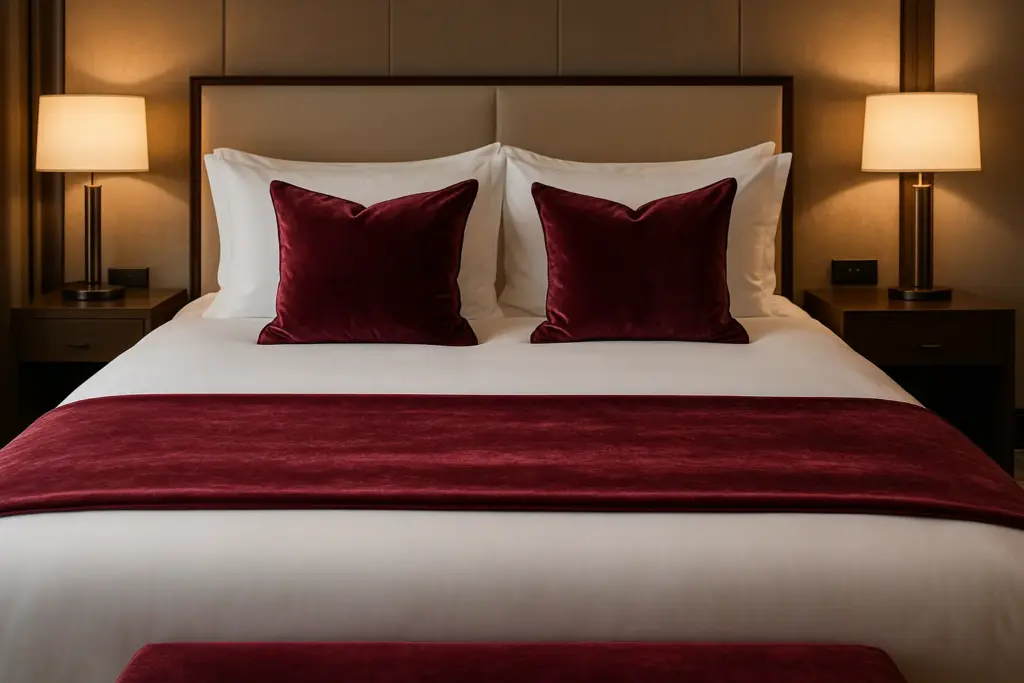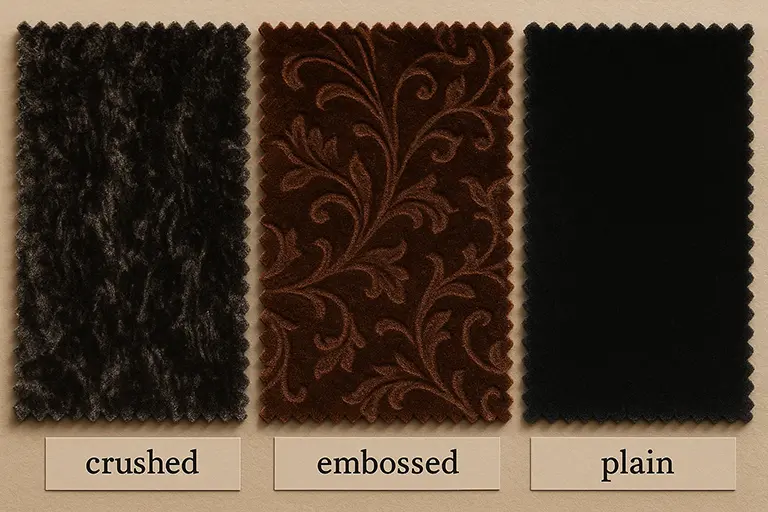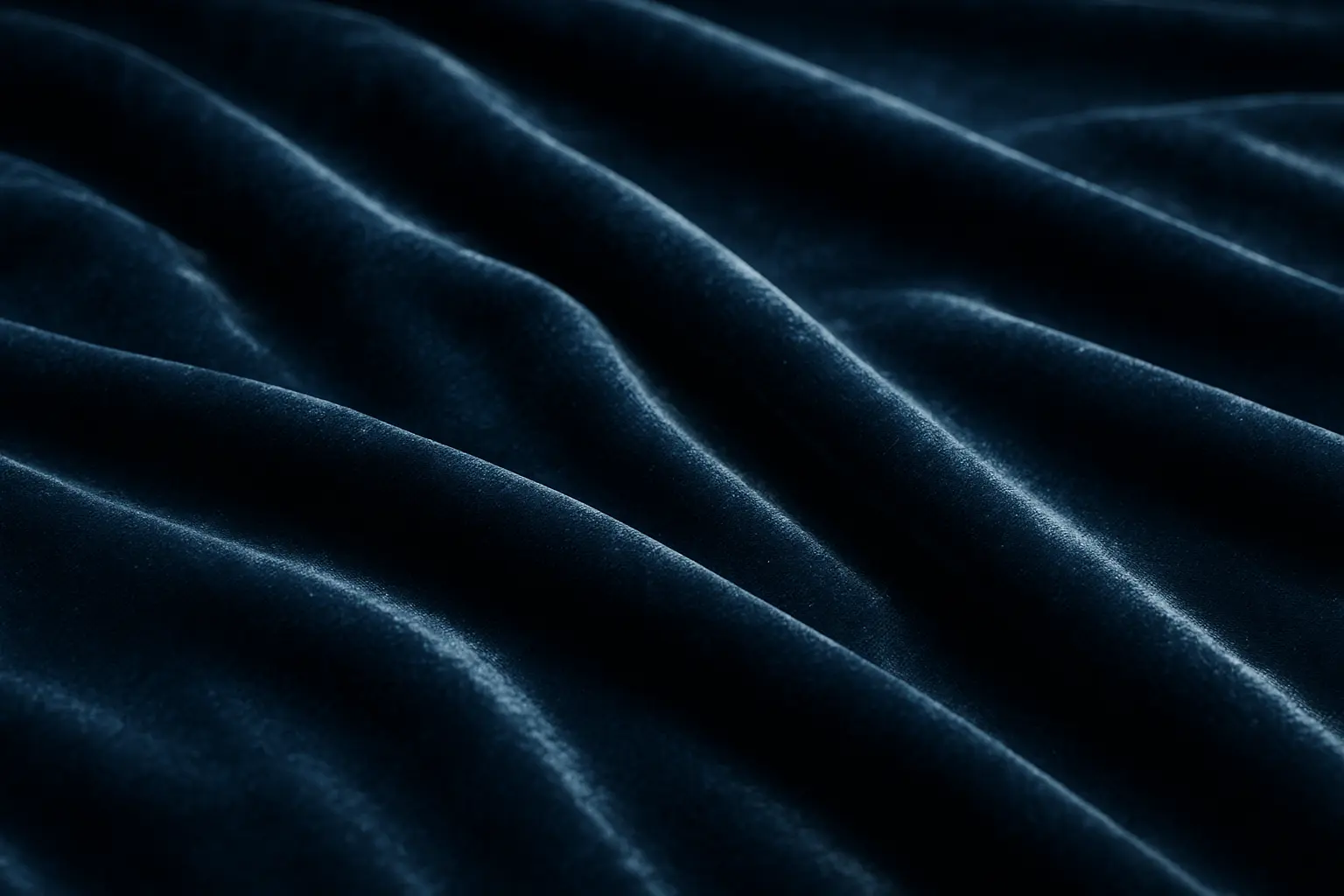Velvet has long been associated with royalty, luxury, and elegance. Its soft touch and shimmering appearance make it a coveted material in both fashion and interior design. In recent years, velvet has also made a strong impact in the world of bedding and home textiles—offering both visual sophistication and cozy comfort.
This article provides an in-depth look at velvet fabric, how it’s made, its main types, and why it’s increasingly popular in the commercial bedding sector.
What Is Velvet?
Velvet is a woven fabric distinguished by its short, dense pile, which gives it a plush surface and a signature sheen. Unlike flat-weave fabrics, velvet’s construction involves an extra set of yarns that create upright loops, which are then sheared evenly to form the soft nap.
Velvet can be made from various fibers, including:
- Silk – the most luxurious and expensive version
- Cotton – breathable and matte in appearance
- Polyester or Microfiber – cost-effective, durable, and wrinkle-resistant
- Viscose/Rayon – offers a smooth, drapey feel with a high sheen
Key Characteristics of Velvet

1. Softness and Tactile Appeal
Velvet’s rich texture is a sensory experience. It is exceptionally soft and often used for decorative bedding elements such as throw pillows, quilts, or coverlets.
2. Lustrous Surface
The way velvet reflects light gives it depth and color variation depending on the angle. This visual richness enhances the ambiance of any room.
3. Insulating Qualities
Velvet is often thicker than traditional bedding fabrics, providing a sense of warmth and comfort, especially during cooler seasons.
4. Durability
Modern velvet—especially polyester or microfiber-based—can withstand repeated use without losing its shape or sheen, making it suitable for hospitality and high-turnover environments.
Common Types of Velvet Used in Home Textiles
| Type | Description | Common Use in Bedding |
|---|---|---|
| Crushed Velvet | Has a patterned texture due to twisting during manufacturing | Decorative pillows, throws |
| Embossed Velvet | Pattern is heat-pressed onto the surface | Bed runners, luxe accessories |
| Velour | Stretchy, knit-based velvet (not woven) | Robes, casual blankets |
| Panne Velvet | Flattened, high-sheen version | Accent cushions, duvet covers |
| Cotton Velvet | Matte finish, breathable, natural fiber | Premium quilted blankets |

Velvet in Bedding Applications
Velvet is primarily used as a decorative and comfort-enhancing fabric in bedding. While it is not commonly used for fitted sheets or base layers (due to its thickness and warmth), it excels in the following:
- Duvet Covers – For visual impact and added softness
- Bedspreads & Coverlets – Lightweight yet cozy layering pieces
- Pillow Shams & Decorative Cushions – Adds color and depth to bedding sets
- Throws & Blankets – Ideal for lounge areas or winter layering
- Bed Runners – Frequently used in hotels to provide a polished look
Advantages of Velvet for Commercial Use
- Premium Look and Feel: Elevates brand image in boutique hotels or high-end rental properties
- Customizable Texture and Color: Velvet dyes well and can be embossed or printed for branding
- Low Maintenance Options: Synthetic blends (like polyester velvet) are machine washable and durable
- All-Season Versatility: Though inherently warm, thin velvet types are suitable even in spring or autumn
Care Considerations
While velvet can look delicate, many modern variants are designed for machine wash and tumble dry. For silk or cotton velvets, dry cleaning is typically recommended to maintain texture. To avoid crushing the pile, avoid ironing directly on the surface—use a steamer or iron with a velvet board.
Conclusion
Velvet fabric offers a rare combination of elegance, comfort, and commercial viability. Whether used in high-end residential bedding or premium hospitality settings, it adds undeniable visual and tactile value. As textile technology continues to evolve, new velvet blends are making this traditionally luxurious fabric more accessible and functional than ever before.
For designers, specifiers, and sourcing managers in the home textiles industry, velvet is not just a trend—it’s a timeless texture that continues to transform modern bedding collections.


Leave a Reply